Hidden Gems in Vietnam Beyond Hanoi & Ho Chi Minh
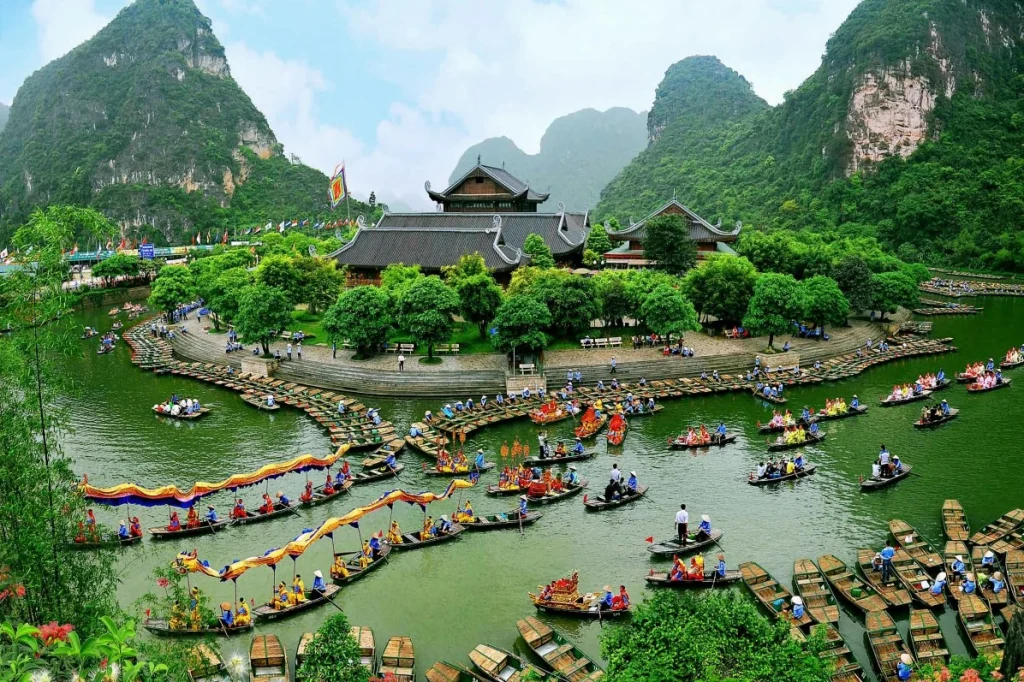
There is something wonderful about Vietnam: the smell of strong coffee in the morning, mist hovering over the green rice fields, and roads that go on forever, winding through mountains and fishing villages. Most visitors stop in Hanoi or Ho Chi Minh City. But if you dig a little deeper, you might find a version of Vietnam that seems slower, more local, and even more beautiful. If you’re planning your first trip to Vietnam and want to wander off the beaten path a bit, this guide will help you find the hidden gems across the country: the quiet towns, untouched islands, and truly soulful landscapes that somehow never make it onto a postcard. And, if you’re looking for some help creating a route that perfectly fulfills your travel style, The Tarzan Way, an AI-powered personalized Vietnam trip planner, can make that process easier. Why Go Beyond Hanoi & Ho Chi Minh? Avoid the crowds: Vietnam’s metropolitan areas are lively, but you’re able to connect with locals and experience more open space by venturing into lesser-known areas. Experience real Vietnamese life: In the countryside and on the coast, you will see ordinary life, like farmers tending to rice paddies, fishermen mending their nets, and children waving as you drive by. Find peace and beauty: You’ll then find tranquil places to explore; misty valleys, limestone mountain peaks, and wide, empty beaches without the map. Affordable exploration: Many off-the-beaten-path regions are more affordable than standard travel and more authentic by offering unique homestays or small eco-lodges. Hidden Gems to Add to Your Vietnam Travel Itinerary Each of the below destinations brings a different side of Vietnam to life – from wild mountains to untouched islands and calm lakes. Ninh Binh (Trang An & Tam Coc) Often called “Halong Bay on land,” this peaceful area offers limestone karsts rising from rice paddies. Take a sampan boat through caves and temples surrounded by calm waters. Perfect for travelers seeking slow mornings and quiet evenings in nature. Ha Giang Loop & Dong Van Plateau One of Vietnam’s most breathtaking drives, full of winding mountain roads and deep valleys. Ride or join a guided loop tour to see ethnic minority villages, local markets, and cliff-edge viewpoints. Ideal for adventure seekers planning their Vietnam travel itinerary. Phong Nha–Ke Bang National Park Home to some of the world’s largest caves, like Son Doong and Paradise Cave. Try a jungle trek, river cave exploration, or a boat ride into the dark cave systems. Great stop for travelers mixing adventure with natural wonders. Ba Be National Park A serene freshwater lake surrounded by dense jungle and waterfalls. Stay with local Tay families in stilt houses and enjoy home-cooked meals. Adds a peaceful pause to your Vietnam trip itinerary. Pu Luong Nature Reserve Think of green rice terraces, wooden bridges, and quiet trekking trails. Perfect for those who want a rural experience without tourist crowds. Great alternative to Sapa if you prefer offbeat adventures. Quy Nhon & Phu Yen Vietnam’s underrated coastal duo is known for turquoise waters and local charm. Enjoy empty beaches, fresh seafood, and hidden rock formations like Ganh Da Dia. Add them to your Vietnam travel planner if you love sea views without resort crowds. Con Dao Islands A small archipelago far from the mainland, famous for its clear waters and coral reefs. Ideal for snorkeling, diving, and quiet romantic escapes. Also holds historical significance as a former prison island – a mix of history and serenity. Ban Gioc Waterfall (Cao Bang) One of Southeast Asia’s most stunning waterfalls, right on the border with China. Surrounded by karst peaks and green valleys, it’s a photographer’s dream. Reachable by scenic routes that make for a great road trip addition. Dalat’s Countryside Trails Beyond the town center, explore coffee plantations, flower farms, and waterfalls. The cool mountain weather and pine forests make it perfect for couples or solo travelers seeking calm. Mekong Delta’s Lesser-Known Routes Skip the crowded floating markets and visit smaller provinces like Tra Vinh or Ben Tre. Take a boat through narrow canals, cycle through coconut groves, and meet Khmer communities. A gentle, cultural side of southern Vietnam. Planning Practicalities & Insider Tips Best time to visit: Overall, travel is best from November through to April when the weather is dry and pleasant. If you want more seasonal insights, refer to our Best Time to Visit Vietnam in 2025 for Travelers to work out which routes are most suitable. Transport: Domestic flights and trains are very effective for long routes, while you can rent a motorbike or use the local bus for shorter distances. Where to stay: Homestays and eco-lodges offer the most authentic, local experience as well as hospitality. Budget: Travelling in Vietnam is very manageable. Even in offbeat locations, you will find decent accommodation at a good price. Packing: Bring light clothing for the south and layers for the north. If you are travelling during the monsoon season, don’t forget to bring a rain jacket. Local etiquette: Smiling is encouraged, always remove your shoes when entering homes, and always show respect to elders. If trip planning feels overwhelming, a tailored itinerary from The Tarzan Way can simplify your route while keeping it flexible and personalized. Offbeat Vietnam Itinerary Ideas 7-Day Northern Escape Day 1–2: Hanoi arrival and day trips to Ninh Binh. Day 3–5: Explore Ha Giang Loop. Day 6: Relax in Ba Be National Park. Day 7: Return to Hanoi for departure. 10-Day Coastal Trail Day 1–2: Fly to Da Nang, visit My Son ruins or Hoi An. Day 3–5: Head to Quy Nhon and Phu Yen for quiet beaches. Day 6–8: Fly to Con Dao Islands. Day 9–10: End with a cultural evening in Ho Chi Minh City. 2-Week Explorer’s Route North: Hanoi → Ha Giang → Ba Be → Phong Nha Central & South: Dalat → Quy Nhon → Mekong Delta (Ben Tre or Tra Vinh) A perfect balance of nature, culture, and coastline. Responsible & Local Travel Support small family-run
A Guide to Corporate Outings and Tours in India | 2025

With the back-to-the-office culture now a standard, you can treat your employees to a break from their usual work routine and take them out for an outing or a vacation. With the perfect balance of work and leisure, these travels will surely enhance work performance and rejuvenate people to put in a better effort in their job roles. It can also serve as an icebreaker between colleagues and enhance work relationships. Too lazy to plan your Corporate Outings and Tours? Try The Tarzan Way – it’s like having your own AI trip buddy that plans everything around your vibe. “A Guide to Corporate Outings and Tours in India” These trips are the best solution to avoid burnout from work, as they act as a getaway from their usual office environments and enjoy work as well as unwind from the stress. Here is a list of things you can do, places you can visit, and stay during an outing or trip with your team and colleagues: Kashmir Manali Nainital Darjeeling Jaisalmer Goa Alleppey Wayanad Andamans 1. Kashmir Credit: BBC Kashmir is uncontested when it comes to its beauty and offerings. It is one of the most exotic destinations in India and rightly so, as its landscapes are so pristine, its valleys extremely captivating, lofty mountain ranges, and enticing lakes and rivers that traverse across the valley. It is also a haven for adventure seekers and nature enthusiasts, as the various towns of Kashmir are brimming with activities and beautiful sights. A corporate trip to this “heaven on earth” will surely enlighten the stressed bodies and souls of the employees. Things to do: Take your team for a trek among the famous and beautiful trekking trails of the Kolahoi Glacier at Sonamarg. Rent boats and take a moment to enjoy the beauty of Dal Lake and shop on the floating markets on the lake while at it. Places to visit: Gulmarg, Pahalgam, and Sonamarg Best time to visit: May to October Where to Stay: Radisson Srinagar, The Heritage Group of Houseboats. 2. Manali Credit: Vishal Bhutani An enchanting hill station tucked amid the Himalayan ranges, Manali is one of the most exciting destinations for a corporate trip. Manali will cater to people who love to spend time in the confines of quaint surroundings and also those who thrive off adventures. It has something to offer to people of any kind and personality. The beautiful streams, rivers, and hills covered in pine trees and orchards will serve as a getaway experience for tired office workers. Things to do: Pay a visit to the hot water springs of Vashisht. Relax and detoxify with your colleagues amid the sounds of the forest. Try river rafting with your team at Tattapani and the Beas River. Go paragliding and witness the beauty of Manali and the Kullu Valley from above. Places to visit: Solang Valley, Rohtang Pass, Naggar Castle Best time to visit: March to July Where to Stay: Echor Himalayan Aurum Manali, The Orchards Green Resorts and Spa. 3. Nainital Credit: Nainital Corbett Tourism A perfect hill station to escape the scorching summer heat and one of India’s most loved getaway destinations is Nainital. Nestled in the lap of the Kumaon Hills, Nainital makes a great choice for a corporate trip. The town is surrounded by exquisite mountain ranges, pine forests, and stunning lakes that are a treat to the eyes and soul. It will no doubt please people from the cities looking for an escape to the hills for a vacation. Things To Do: Take a safari ride with your colleagues at Jim Corbett National Park and witness the varied wildlife bounty. Enjoy a day out trying out activities offered at Devbhoomi Outdoor Adventure Park. Try the ropeway ride at the Corbett waterfalls. Places To Visit: Nainital Zoo, Tiffin Top, Naina Peak Best Time To Visit: March to June Where To Stay: The Kumaon Retreat, Orchid Nainital 4. Darjeeling Credit: Arvind Telkar A relaxing hill station where time slows down due to the unhurried pace of life, Darjeeling is a soulful destination to rejuvenate the tired mind and body. With spectacular sunrises and sunsets, views of the snow-capped Himalayan ranges, iconic movie locations, and charming tea gardens, anyone walking the streets of Darjeeling will reawaken to the beauty of life and nature. Things To Do: Wake up early and head out with the whole team to witness the Sunrise at Tiger Falls. Visit the beautiful tea gardens, take group pictures, and unwind amid the beautiful landscapes. Shop at the local markets for tea leaves, Pashmina shawls, and churpi, a local, hardened cheese. Places To Visit: Himalayan Mountaineering Institute, PNZ Zoological Park, Ghoom Monastery Best Time To Visit: April to June Where To Stay: Istana Resorts and Spa, The Elgin 5. Jaisalmer Credit: National Geographic The vibrant city of Jaisalmer, famous for its traditions and cultural heritage, is indeed one of the most exciting places to visit in India. Jaisalmer is also home to a lot of royal heritages that are evident from its architectural constructions of forts, havelis, and castles. The rustic dunes, royal palaces, bright-lit temples, and bazaars will serve as the perfect places for outings and sightseeing with colleagues. Things To Do: Go parasailing at Kanoi and enjoy the thrill and excitement of this activity. Explore the dunes with Quad bikes at Sam Sand Dunes with your team for an unforgettable experience. Explore the various enticing bazaars and shop for your loved ones. Places To Visit: Gadisar Lake, Jaisalmer Fort, Desert National Park, Patwon ki Haveli. Best Time To Visit: November to March Where To Stay: Pansari Palace, The Desert Palace 6. Goa Credit: Sumit Sourav via Unsplash Goa, the most iconic beach destination in India, is also one of the best places to enjoy a trip with your work colleagues. The sounds of waves hitting the shore, sunlight beaming on your face with a light breeze in the air, and clear skies all culminate to make Goa a desired destination to work and
Goa Itinerary for 3, 5 & 7 Days: Beaches, Culture & Nightlife
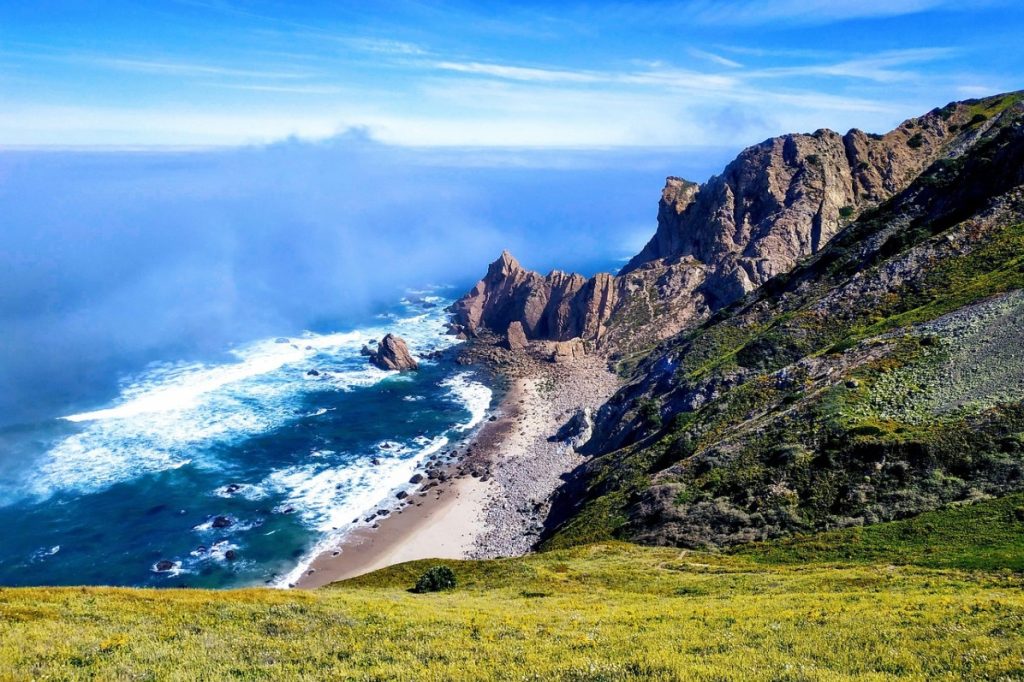
Goa has a way of attracting every kind of traveller – from party lovers to peace-and-quiet seekers. With its golden beaches, Portuguese charm, and sunny skies, each area in Goa is practically a story waiting to be told. But the big question is this – how many days do you really need in Goa? Whether you have something like a long weekend or a full week, this Goa itinerary will help you get the most out of it. To break it down – 3 days to allow for a quick escape, 5 days for a more unhurried trip, and 7 days for the full “susegad” life. 3-Day Goa Itinerary: A Short and Sweet Beach Break If you’ve only got three days, stay in North Goa. It’s lively, easy to get around, and offers the perfect mix of beaches, nightlife, and markets. Day 1: Classic Goa Start Begin at Calangute Beach, the heart of Goa tourism. Try water sports like jet skiing or parasailing at Baga Beach. Visit Anjuna Flea Market for souvenirs, boho clothes, and handmade jewelry. Dinner at Britto’s or Souza Lobo – classic beach shacks with live music. Stay overnight near Calangute for easy access to all the action. On Day 2: History & Sunsets Start your morning at Fort Aguada, one of the best Goa tourism places for panoramic sea views. Grab lunch in Candolim, then relax at SinQ Beach Club or Tito’s Lane at night. Want to know when to catch the right party crowd? Read our Best Time to Visit Goa for Parties vs Peace. And on Day 3: Cultural Goa Visit Old Goa Churches – Basilica of Bom Jesus and Se Cathedral. Stroll through Fontainhas, the Latin Quarter, filled with Portuguese-era homes and colorful streets. End your trip watching the sunset at Dona Paula Viewpoint. 5-Day Goa Itinerary: The Perfect Balance of Buzz & Bliss Five days let you enjoy both North and Central Goa – mixing beaches, heritage, and relaxation. Day 1–2: Follow the 3-day plan for North Goa On Day 3: The Cultural Loop Visit Mangueshi Temple and Reis Magos Fort – historical gems often skipped by tourists. Stop by Panjim Church for postcard-perfect photos. Enjoy Goan food at Mum’s Kitchen or Vinayak Family Restaurant. On Day 4: Secret Escapes Head to Ashwem or Morjim, some of the most peaceful family-friendly beaches in Goa. Enjoy yoga sessions or breakfast by the beach. If you prefer quiet sands, check out Best Hidden Beaches in Goa for Peaceful Escape!! And on Day 5: Old Town & Sunset Cruise Explore Panjim’s local markets – perfect for cashew nuts, spices, and handicrafts. Take an evening Mandovi River cruise for live Goan music and dinner. Stay overnight in a boutique hotel for a cozy end to your Goa trip. Want a deeper dive into Goan heritage? Don’t miss Goa Beyond Beaches: Cultural & Heritage Experiences. 7-Day Goa Itinerary: Experience Goa Like a Local A week in Goa means you can finally slow down and soak in its rhythm – from sunrise yoga to late-night laughter under palm trees. Day 1–2: North Goa Vibes Begin with Calangute, Baga, and Candolim. Indulge in water sports or cafe-hopping in Anjuna. Party at Cohiba, SinQ, or Hammerz. On Day 3: Old Goa Heritage Trail Visit the Basilica of Bom Jesus, the Se Cathedral, and the Arch of the Viceroys. Explore Fontainhas for local art galleries and quaint cafes. On Day 4–5: South Goa Serenity Drive to Colva, Agonda, and Palolem – where peace replaces the party. Try kayaking, beach yoga, or dolphin watching. South Goa Unplugged: Exploring the Quieter Side will help you pick the calmest beaches. And on Day 6: Hidden Corners & Local Eats Visit Butterfly Beach or Kakolem Beach – two hidden spots covered in Hidden Beaches in Goa Only Locals Know About. Try local delicacies – Goan fish curry, poi bread, and bebinca. Shop at Palolem Market or Mapusa Bazaar for handmade crafts. And on Day 7: Leisure & Workation Vibes Spend your last day working from a beachfront café or just relaxing. If remote work is your thing, check 13 Best Places to Have an Amazing Workation in Goa. Wrap up your trip watching the sunset at Cabo de Rama Fort. Best Places to Stay in Goa North Goa: Stay near Baga or Calangute – easy access to nightlife and beaches. South Goa: Opt for serene resorts near Agonda or Palolem. Boutique stays: Fontainhas and Panjim offer cozy colonial-style homestays. If you’re planning a workcation or longer stay, Goa packages often include hotel, bike rental, and airport transfers at great rates. Insider Tips for the Perfect Goa Trip Best time to visit Goa for tourists: November to February – ideal weather for beaches and parties. What to pack for a Goa trip: Cotton clothes, sunscreen, flip-flops, hat, and a light jacket for evenings. Getting around: Rent a scooter for flexibility. Local cuisine: Don’t miss vindaloo, xacuti, and fresh seafood thalis. Goa tourism tip: Avoid weekends for quieter beaches. Planning a larger group outing? Our Guide to Corporate Outings and Tours in India might inspire your next team trip idea. FAQs 1. How many days are ideal for a Goa trip? 5 to 7 days are perfect to enjoy both North and South Goa comfortably. 2. Which are the most family-friendly beaches in Goa? Miramar, Colva, Ashwem, and Mandrem are great for families. 3. What’s the best time to visit Goa for tourists? November to February for the best weather and beach activities. 4. Where should I stay for nightlife? Baga, Calangute, and Candolim are the best spots for nightlife and cafés. 5. What are some quiet beaches for peace lovers? Agonda, Butterfly, and Kakolem – explore them in Hidden Beaches in Goa Only Locals Know About. 6. Is South Goa worth visiting for first-timers? Absolutely – South Goa is the serene side of the state. Check South Goa Unplugged for ideas. 7. Can I plan a Goa workation? Yes! Goa has several co-working stays –
Hidden Beaches in Goa Only Locals Know About
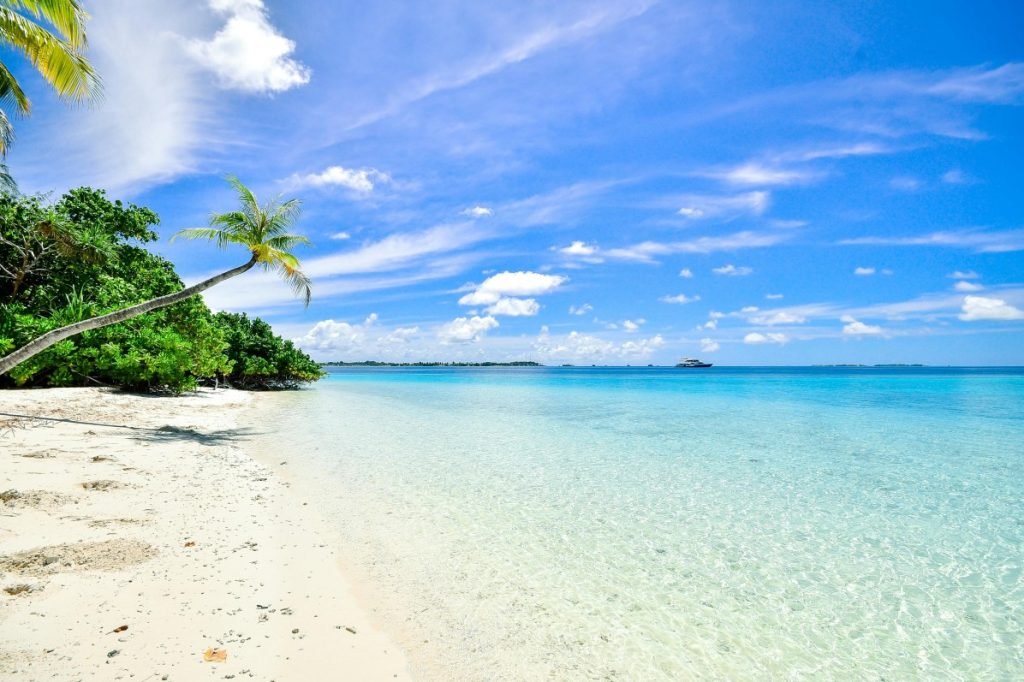
While Goa is known for its nightlife and lively beaches, ask a local, and they will share a little secret – the true Goa is found farther from the crowds. It is these locations that do not have beach shacks playing EDM music, where you can listen to the sound of the waves crashing and the wind blowing through palm trees. In this blog, we’ll explore the hidden beaches in Goa only locals know about – where peace, raw beauty, and a touch of adventure meet. Whether you’re a traveler seeking solitude, a photographer chasing unspoiled views, or someone just tired of tourist traps, this one’s for you. And if you ever feel lost while planning your route, The Tarzan Way – an AI-powered personalized travel itinerary planner – can help you discover these offbeat corners based on your interests. Why Discovering Hidden Beaches in Goa is Worth It Although Goa tourism often depicts crowded sands and party lights, the essence of the state consists of its pristine beaches. These hidden beaches in Goa are perfect for travelers who want an experience that is different from the typical tourist experience – raw landscapes, serene swimming, and authentic local life. Here’s what makes them special: Quiet & Peaceful: No tourist rush, just you and the sea. Local Culture: Small fishing villages and homestays instead of luxury resorts. Affordable: You’ll find budget-friendly hotels in North Goa nearby – often half the price of the busy areas. Eco-friendly Vibe: Less plastic, more palms, and cleaner sands. How Locals Find These Beaches Most of these secluded beaches in Goa aren’t marked on big travel maps. Locals usually get there through shortcuts – dirt roads, forest trails, or even small boat rides. Here are a few tips if you’re planning to explore: Ask a fisherman or cafe owner. They often know which paths lead to lesser-known coves. Use scooters. Narrow Goan roads are perfect for bikes. Avoid large cabs. Many roads near these beaches are too tight for cars. Travel in the dry months (Oct–Apr). Monsoons can make trails slippery. If you’re wondering exactly how to reach hidden beaches in Goa, a combination of local guidance and a bit of adventure spirit goes a long way. The Best Hidden Beaches in Goa Only Locals Know Ready to step away from the touristy sands? Here are some of the best hidden beaches in Goa – real gems that even regular visitors often miss. 1. Butterfly Beach Tucked near Palolem, Butterfly Beach is only accessible by boat or a jungle trek. Shaped like a butterfly, this cove offers turquoise water, dolphins, and sunsets worth the effort. Tip: Visit early morning for total solitude. Also check our blog Best Hidden Beaches in Goa for Peaceful Escape!! for similar offbeat gems. 2. Kakolem (Tiger Beach) Probably Goa’s most secret stretch – few tourists even know it exists. It sits near Cabo de Rama Fort and requires a short hike downhill. Once there, you’ll find golden sand and crystal-clear water. Tip: Carry water – no stalls here! If you’re into forts and history, you’ll love reading Goa Beyond Beaches: Cultural & Heritage Experiences. 3. Cola Beach Half beach, half lagoon, Cola Beach feels like two worlds meeting. You can kayak in the lagoon or just relax by the blue water. Perfect for: Couples or anyone wanting a quiet afternoon. It’s one of those family-friendly beaches in Goa that’s peaceful yet safe for kids. 4. Galgibaga Beach This one’s special – not only is it serene, but it’s also a turtle nesting site. Located in South Goa, it’s perfect for those who want to blend nature and calm. Visit between December and February for turtle sightings. Want more such peaceful southern spots? Check out South Goa Unplugged: Exploring the Quieter Side. 5. Hollant Beach Close to the airport but somehow untouched by crowds. Great for watching fishermen at sunrise and grabbing chai from roadside stalls. Fun fact: Locals call it “the sunrise beach” because the waves face east. 6. Velsao Beach A long, quiet beach south of Bogmalo – perfect for evening walks and seashell collecting. Families love it here because of the clean, shallow water. 7. Kakrajal & Arambol’s Hidden Stretch Walk a bit north of Arambol’s main beach and you’ll find quiet corners where locals chill after sunset. Yoga, drum circles, and quiet cafes – all minus the chaos. 8. Cola Backwaters & Hidden Lagoon Ideal for travelers who want to try camping on hidden beaches in Goa. Several eco-stays offer tents or bamboo huts right by the water. 9. Betul Beach Near the mouth of the Sal River, Betul is where you’ll find peace, a few fishermen, and maybe a dolphin or two. The nearby fort adds an old-world charm. Visit Betul Fort and then read Goa Beyond Beaches: Cultural & Heritage Experiences to learn more about its history. Best Time to Visit Hidden Beaches in Goa The ideal time depends on what you want: October to March: Clear skies, calm waters – perfect for swimming. April to May: Hot but great for solitude. June to September (Monsoon): Magical greenery but strong waves – not safe for swimming. If you want to decide between calm or chaos, our guide “Best Time to Visit Goa for Parties vs Peace” breaks it down beautifully. Sample 3-Day Hidden Beach Itinerary If you want to experience these without rushing, here’s a simple Goa itinerary: Day 1 – South Goa: Start at Butterfly Beach (morning boat ride) Lunch at Palolem or Agonda End at Cola Lagoon for sunset On Day 2 – Peaceful Corners: Visit Galgibaga and Betul Try yoga or kayaking near Cola Stay overnight at a local homestay or eco-hut And on Day 3 – North Goa Exploration: Ride to Arambol’s hidden stretch Stop at Velsao on the way back Wrap up with local Goan seafood at a beach shack Need more ideas? Don’t miss Top Attractions to Include in Your Goa Travel Itinerary. And if planning feels like too
Perfect 7-Day Goa Itinerary Blissful North & South (2025)
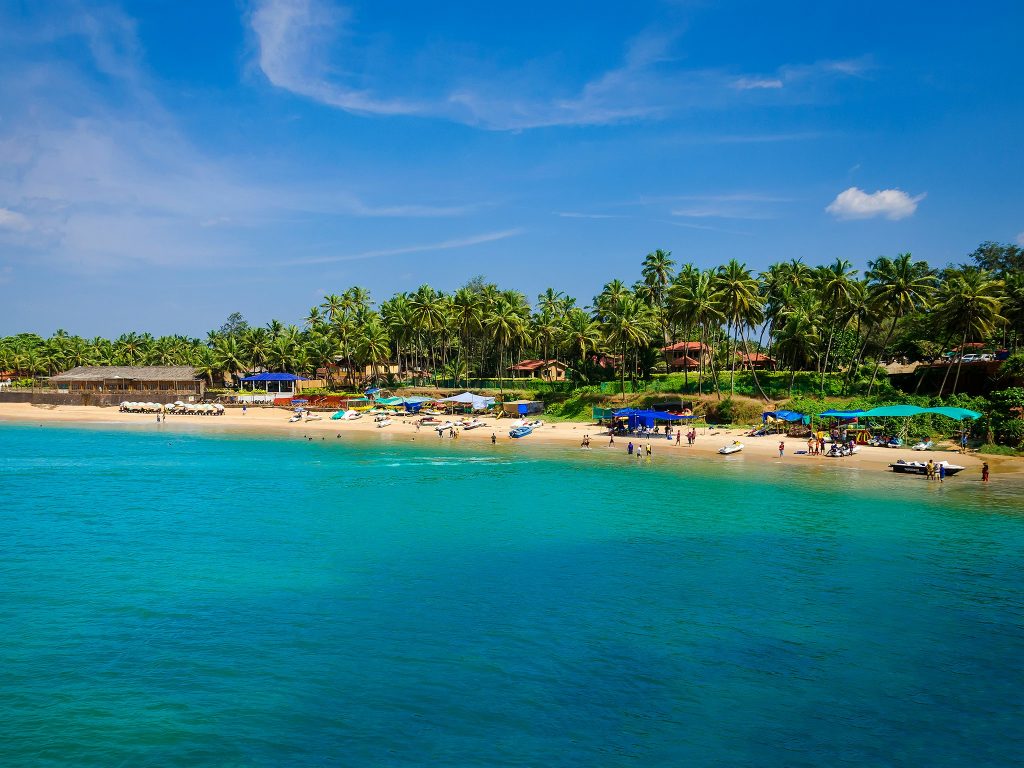
Goa is justly famous for its beaches, but this former Portuguese colony is characterized by much more. It is also home to some of the most stunning waterfalls in India, Indo-Portuguese architecture, ancient temples, and a delightful multicultural heritage. Goa is also the only part of India with a significant European influence, a portion of Konkan soul, and a unique, rich, cultural tapestry. “The Perfect 7-Day Goa Itinerary” For first time Goa visitors differentiating between the party atmosphere of North Goa and the calm, lush, and lovely landscapes of South Goa can be a challenge. Why not get the best of both? Too lazy to plan your Goa trip? Try The Tarzan Way – it’s like having your own AI trip buddy that plans everything around your vibe. Their 7-day Goa plan is the perfect mix of chill beaches + cultural feels. This Goa week-long trip is intended to be a pack itinerary to sample the active culture of the region. The 7-day Goa itinerary is designed to be a time balance between relaxation pants and culture boots. For Day 1, Discover the Buzzing Beaches of North Goa On the first day in Goa, you should visit the beautiful beaches. The North Goa beaches are filled with activity. You may spend the holiday in the busy, tourist-loved beaches such as Vagator or Baga. If you want to relax, you can spend the holiday at Morjim beach. You can spend the day at the beach and enjoy swimming, sunbathing and water sports such as parasailing or banana rides. Pro Tip: You should get a scooter. You can visit Calangute, Baga, Anjuna and other North Goa beaches with your scooter. It is the most popular method of transport. Day 2: Check Out the Unique Attractions in Panjim The capital of Goa is Panjim or Panaji and the heart of the state. It offers a perfect blend of culture, shopping, and history. Spend the morning in the Fontainhas Latin Quarter and then visit the narrow streets and enjoy the beautiful, colorful Portuguese houses. In the evening, the tourists can enjoy the street market filled with local and unique merchandise, live music andstreet performances. Be sure not to overlook the various street food vendors situated in Panjim. To gain a true understanding of the area, you should sample some of the local Goan treats, particularly the chorizo pav and the fish cutlets. Day 3: Discover Goa’s Historical Landmarks Leave the third day for the history of Goa. Go to Old Goa (Velha Goa), a location that is a UNESCO World Heritage site and used to be the capital of the Portuguese Indies, and the most magnificent Old Goa. Go to the awe inspiring Basilica of Bom Jesus, where the mortal remains of St. Francis Xavier rest, and to the imposing Sé Cathedral. Then, in the afternoon, you go back in the direction of Panjim in order to see historic forts, either Reis Magos or Fort Aguada, to appreciate their history and spectacular views of the sea. Pro Tip: In Old Goa, you should hire a licensed guide. The history of the monumental churches and colonial buildings is enhanced for a reasonable price by their narratives and knowledge. Day 4: Southern Voyage to Relax and Camp at Cola Beach Leaving behind the South’s bustle, Cola Beach is in the South Goa region. South Goa is cleaner, more fully, and more peaceful. Head to Cola Beach, for it is one of the understated marvels of Goa, famous for its lagoon. For the rest of the day, bask in the glory of nature, and at night, experience the wonder that is camping on the beach. Relax, the locals have improvised huts as well as deluxe tents for you to choose from. Pro Tip: Cola Beach. Camp on the beach. Relax, the locals have improvised huts as well as deluxe tents for you to choose from. Day 5: Gaze at the Horizon from Cabo De Rama Fort The route to Cabo De Rama is one of the oldest in Goa, and the most dramatic. It sits on a cliff above the beach, at the middle of Agonda and Cavelossim. It has one of the best views of the Arabian Sea. It is said that Lord Rama and Sita spent some of their exile in the fort, making it a rewarding route to the excellent views and rich history. Pro Tip: Make sure you wear proper shoes as you explore the rocky paths in the fort. There isn’t much in the way of shops, so bring your own water and snacks. Day 6: Scavenge the Streets of Palolem If you find the solitude of the South a little too much, you can head to Palolem beach. It is much livelier, and one of the most beautiful beaches in the South. It is well known for its crescent shape, and calm waters. The beach is lined with shops that sell clothes, souvenirs, and trinkets. It is a great place to practice your bargaining skills. Pro Tip: If you are looking for a unique Goa’s nightlife, you can check for a Silent Noise party at Palolem, or the nearby Patnem beach. You are given wireless headsets and can choose different DJs to listen to, making for a surreal party experience. Day 7: The Final Day of Leisure Your final day is to be spent doing anything you wish, be it revisiting your favorite beach, attending a Goan cooking class, getting an Ayurvedic massage, or simply hanging out at a beach shack with a book and a drink, enjoying all the final moments of your Goan paradise before heading to the airport. Pro Tip: For an authentic Goan meal, you may want to finish your trip at a local restaurant and enjoy some fish curry and rice or prawn vindaloo. Still Have Some Doubts in Your Mind “FAQs”: Q. What are the things to do if I have 1 day in Goa? A: Hit the buzzing beaches of North Goa —
No Passport Needed: 7 Foreign-Like Indian Locales (2025)

Have you ever wished to walk down picturesque French streets, ski the Swiss Alps, or glide in a gondola through the canals of Venice? Affording a holiday is hard enough, and the thought of visa application and long flights are a turn-off, the good news is you can enjoy an international holiday in India. “7 Foreign-Like Indian Locales” India is rich in diversity of culture and civilization. There are countless places in the country that look like the places in the world and would make you forget for a moment that you are in India. Too lazy to plan your Travel the World in India Trip? Try The Tarzan Way – it’s like having your own AI trip buddy that plans everything around your vibe. This guide will introduce you to a few of these gems. Get ready to explore the world without breaking the bank or needing a passport stamp: 1. Pondicherry: A Slice of France on the Coromandel Coast Located on the Coromandel Coast, Pondicherry (or Puducherry) was the site of French colonial settlements. This town still has a unique Gallo charm. Take a stroll in the French Quarters (or ‘White Town’) and take in the fossil era villas wrapped in bougainvillea, the cobble paths, and the cafes with French treats. Witness the puffed decor and the polite ambiance and you will believe that this town transports you to the southern coast of France. Best Time to Visit: October to March. Pro Tip: French Quarters are best explored on a bicycle or a motor scooter to your own speed. This will help you spot the hidden pastries and some nice places to check and photograph. 2. Gulmarg, Kashmir: India’s Answer to Switzerland Tourists are fascinated by the beauty of Kashmir, and Gulmarg is the finest of all the places. Like Switzerland, Gulmarg is covered by snow, laminates, and greenery. In the winter, Gulmarg is one of the snow resorts, and in the summer, it has one of the highest golf courses. Gulmarg has one of the finest postcard quality scenery and ambiance. Best to visit: January to February, April to June. Pro Tip: You should ride the Gondola, which is one of the highest in the world. You should book tickets online. 3. Andaman and Nicobar Islands: The Ko Phi Phi of India The Andaman and Nicobar Islands are filled with tropical paradise, picturesque beaches, and are filled with the best beaches in India, which includes great snorkeling and scuba with tropical birds. Best Time to Visit: October to May. Pro Tip: Visit Radhanagar Beach on Havelock Island (Swaraj Dweep) at sunset. It’s consistently ranked as one of the best beaches in Asia and its beauty is truly breathtaking. 4. Khajjiar, Himachal Pradesh: The Original “Mini Switzerland” Officially christened the “Mini Switzerland of India,” Khajjiar is a small hill station that packs a scenic punch. The centerpiece is a stunning, saucer-shaped meadow surrounded by a dense forest of deodar and pine trees. With a serene lake in the middle and views of snow-capped mountains in the distance, it’s a picture-perfect replica of the European countryside. The cool mountain air and tranquil ambiance make it a perfect escape. Best Time to Visit: November to March (for a winter wonderland); March to June (for pleasant weather). Pro Tip: For a bit of fun, try zorbing (rolling downhill inside a giant orb) on the main meadow. It’s a unique activity that offers a thrilling perspective of the stunning landscape. 5. Srinagar, Kashmir: A Glimpse of Floating Markets Any trip to Srinagar wouldn’t be complete without visiting the famous floating market on Dal Lake. It is picturesque in the same way, and can even be compared to, the floating markets in Bangkok and the canals of Amsterdam, albeit with the added beauty of the Himalayas. Here vendors on traditional shikara boats sell fresh vegetables, flowers, and other handicrafts, all while surrounded by the stunning, and majestic, view of the Himalayas. You have to see it to believe it. Best Time to Visit: April to October. Pro Tip: For the most memorable experience, spend the night on a traditional Kashmiri houseboat, rather than a hotel, on Dal or Nigeen Lake. It is unforgettable to wake up to the gentle lapping on the hull of the houseboat. 6. Alleppey, Kerala: The Venice of the East Alleppey, or Alappuzha, is known as the “Venice of the East” and for good reason. It is the centerpiece of the backwaters in Kerala, which consists of an elaborate system of interconnected lakes, canals, and lagoons. Instead of gondolas, you have traditional houseboats (kettuvallams) that take you through calm, palm tree-lined canals. Floating through the narrow canals is as magical and picturesque as a gondola ride, where you pass lush paddy fields and quaint villages. Best Time to Visit: Best time to visit is from November to February. Pro Tip: Go for an overnight houseboat cruise. You will get to see the backwaters sunsets and sunrises and get away from the crowds of the day. 7. Coorg, Karnataka: the Scotland of India Because of its mist-covered and rolling hills, and cool and crisp weather, Coorg (Kodagu) is frequently likened to the Scottish Highlands. This portion of Karnataka is well recognized for its coffee and spice cultivation. Blending with the foliage are the charming traditions of the Kodava people and the waterfalls tucked away in the hills, which provide a very charming surprise. Best Time to Visit: Best time to visit October to March. Pro Tip: Visit a coffee plantation, it is a must. You’ll find many coffee plantations that offer tours and let you taste coffee made from freshly picked beans. FAQs: Q. Why are these Indian places compared to foreign countries? A. This is due to architectural, landscape, and ambiance comparatives. For instance, Gulmarg has an alpine landscape that is a lot like the Swiss Alps and the old French colonies in Pondicherry are laden with French architecture. Q. Is it cheaper to visit these places than
Top Remote Work Destinations: India & Global Picks
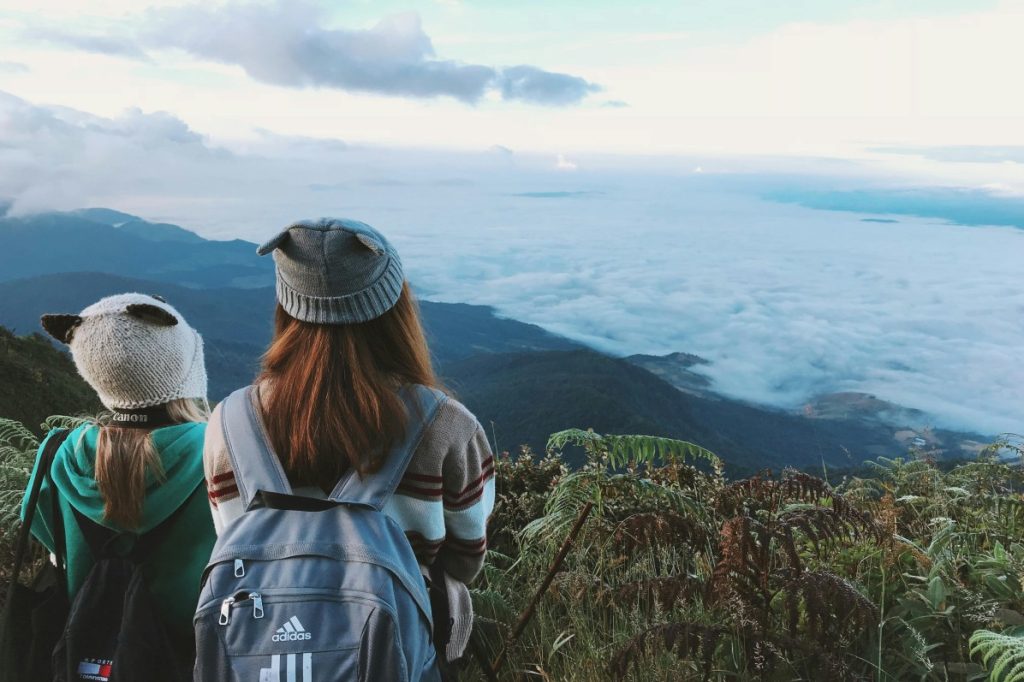
By 2025, remote workers won’t have to decide between productivity and travel. Imagine working from a chic European café, a beachside villa, or a mountain cottage. This blog is your go-to resource for workation travel planning, offering a combination of SEO-rich advice and an itinerary to assist you in choosing locations (both domestically and internationally), estimating expenses, and organizing a smooth remote work vacation. This remote work travel guide covers everything, whether you’re looking for cities, beaches, or mountains. 1. Criteria for Choosing a Good Workation Spot Here are the main filters you should use before diving into workation destinations: Reliable power backup and internet Coworking spaces and cozy work arrangements Recreation and local culture in balance Stay permits and visa friendliness Living expenses and the affordability of housing Pro Tip: Before making a reservation, inquire about upload and download speeds from hosts, look up reviews regarding power outages, and ask for a specific desk or quiet corner. 2. Top Workation Destinations in India Here is the list of top workation destinations in India: 2.1 Goa (North & South) Goa is still the best place to work and play. There are a lot of cafes and coworking spaces in the Anjuna, Vagator, and Saragoo areas. There are more peaceful areas and places to stay in Goa. Excellent balance between working in the mornings and taking walks on the beach or listening to live music in the evenings. Pro Tip: Book a villa or guesthouse with a generator or UPS. Avoid beach shacks without backup electricity. Verify that your room has Wi-Fi, not just the common areas. 2.2 Uttarakhand: Rishikesh, Nainital, Mukteshwar In the Tapovan, Laxman, and Jhula areas, Rishikesh combines a spiritual atmosphere with cafes. Nainital and Mukteshwar provide calmer work environments and serene forest/lake views. Pro Tip: Mobile signals vary in hilly terrain. If necessary, keep a 4G hotspot and a signal booster with you. 2.3 Himachal & Lesser-Known Valleys Jibhi (Banjar Valley): A unique, peaceful, and rising workation gem in the Banjar Valley. Sainj Valley, Kalga, Janjehli: Affordable, tranquil, and perfect for extended visits. Manali / Old Manali: Digital nomads are familiar with Manali, also known as Old Manali. Pro Tip: Altitude, temperature, and heat all have an impact on equipment in mountainous regions. Carry extra cables and travel adapters, and use surge protectors. 2.4 Other Indian Gems: Coorg, Darjeeling, Pondicherry Coorg, Karnataka: Nature hikes, peaceful retreats, and stays on coffee plantations. Darjeeling, West Bengal: misty hills, tea gardens, serene working environment. Pondicherry: slower tempo, seaside cafes, and French colonial streets. Pro Tip: Always look for monsoon or seasonal windows. Off-peak months frequently offer better bargains and fewer crowds in the hill and coffee regions. 3. Top Workation Destinations Abroad Here is the list of top workation destinations at abroad: 3.1 Southeast Asia: Bali, Chiang Mai Bali, Indonesia: Ubud and Canggu are very well-liked by digital nomads in Bali, Indonesia. Chiang Mai, Thailand: The expat community, coworking culture, and affordability of Chiang Mai, Thailand. Pro Tip: Verify permits and visa requirements. Visas for digital nomads are now available in many countries. Additionally, check the internet when you get there and switch to a backup if necessary. 3.2 Europe: Lisbon, Barcelona, Tallinn Lisbon, Portugal: River views, pastel houses, robust nomadic infrastructure. Tallinn, Estonia: clean infrastructure, tech-friendly, and digital services. Barcelona, Spain: It is a seaside city with a thriving coworking community and cafe culture. Pro Tip: Because Europe tends to be more expensive, pick out more affordable neighborhoods and longer-stay deals. Verify the time zone overlap for your employers and clients as well. 3.3 Latin America: Medellín, Playa del Carmen Medellín, Colombia: A “City of Eternal Spring” with a pleasant climate, a vibrant café culture, and excellent connectivity. Playa del Carmen, Mexico: Beach, jungle, and coworking spaces in Playa del Carmen, Mexico. Pro Tip: Verify that your destination is covered by your travel and health insurance. Have a backup eSIM and a local SIM on hand at all times. 4. Sample Itineraries & Duration Ideas 4.1 India Workation Itinerary (7–10 days) Day 1–2: Arrive, get settled, and check connectivity Day 3–6: Work as usual with scheduled breaks (spend the evenings exploring local sites) Day 7:Rest, local sightseeing, and a buffer day Optional Day 8–10: Travel to neighboring locations and modify work schedules 4.2 Abroad Workation Itinerary (10–14 days) Day 1–2: Jet lag, neighborhood exploration, and coworking space discovery on the first two days. Day 3–9: Core work time, schedule outings for weekends Day 10–12: Longer local trips (day tours, nearby towns) Final Day: Wrap work, pack, depart Pro Tip: Avoid scheduling heavy tasks on the day you arrive or depart; instead, always allow buffer days at the beginning and end of your trip. Utilize those for recovery or setup. 5. Cost, Budget & Planning Tips Accommodations (homestays, boutique hotels, or guesthouses) Fees for coworking spaces and cafés Local transportation, food, and SIM/internet top-up Costs of a visa or permit Travel and health insurance When compared to city living, many places to work in India can be reasonably priced. Costs vary greatly abroad; Southeast Asia is typically less expensive than Europe or Latin America.. Pro Tip: Always negotiate for weekly or monthly stays, as these frequently offer a 20–30% reduction over nightly rates. Additionally, pick lodgings that offer “long stay” or workation packages, choose accommodations with workation packages. 6. Workation Essentials & Productivity Hacks Reliable backups: external battery, portable Wi-Fi Noise cancellation (white noise app, earphones) Strict routines and time blocking (mornings for deep work) Combination of local SIM and eSIM Pro Tip: Make use of the “office hours” model. Set aside 2-3 hours for meetings and calls, and make sure that these times are unoccupied. Additionally, always keep a power bank, an extra charger, and a USB hub with you. Frequently Asked Questions (FAQs) Q1. What is the average cost of a workation per day? The destination determines this. A daily budget of ₹1,500 to ₹4,000 may be adequate in India (accommodation + food + necessities). Depending on
Best Time to Visit Goa for Parties vs Peace
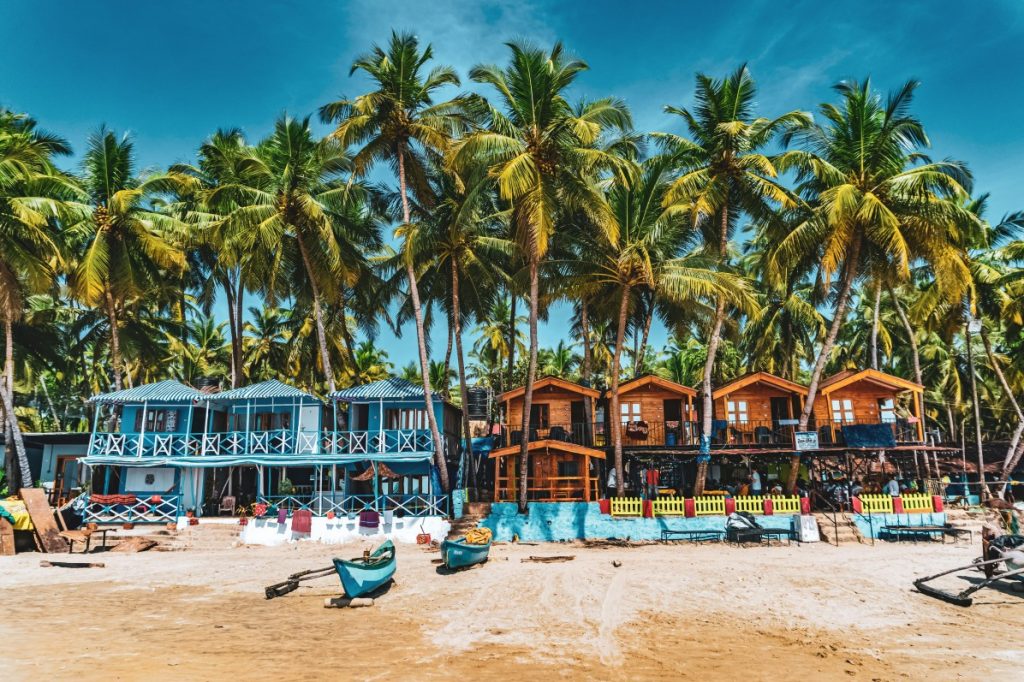
If you ask ten different travelers, “When’s the best time to visit Goa?” you’ll probably get ten different answers. For some, Goa means neon-lit beaches, buzzing nightclubs, and sunrise parties. For others, it’s sipping chai on a quiet shore, listening to waves instead of loudspeakers. The truth is – Goa has two faces. And the best time to visit depends on whether you’re chasing parties or peace. This blog will help you decide when to pack your bags for a vibrant Goa trip or a laid-back getaway. We’ll talk about seasons, experiences, stays, and even hidden gems. Along the way, I’ll also share a few insider links from other detailed guides (because Goa is too big for one blog!). And if planning feels overwhelming, you can always try The Tarzan Way, an AI-powered personalized travel itinerary planner that builds your Goa itinerary around your vibe – whether you’re a party animal or a peace-seeker. Goa for Parties – The Vibrant Side When people think of Goa tourism, the first thing that pops into mind is its electrifying nightlife. From December to January, Goa turns into a carnival of music, dance, and endless celebrations. Best time for parties: November – February December & New Year’s Eve → The most happening season, but also the most crowded and expensive. Sunburn Festival (usually in December) → Asia’s biggest electronic dance music festival. Christmas Week → Goa turns into a non-stop party zone. Must-try experiences for party lovers: Clubbing hotspots: Tito’s, Mambo’s, and LPK Waterfront. Beach parties: Anjuna, Vagator, and Baga beaches. Late-night cafes: Curlies and Shiva Valley. This is where Goa nightlife really shines. If you’re wondering about the things to do in Goa at night besides clubbing, try a night cruise on the Mandovi River or a midnight beach walk. For a detailed look at the party scene, check out our blog Goa’s Nightlife: A Guide to the Lit Nightlife. Goa for Peace – The Serene Side Now, let’s flip the coin. Beyond the rave music and crowds, Goa hides a quieter, soulful personality. If your idea of travel is watching sunsets, practicing yoga, or strolling along empty beaches, you’ll love the off-season. Best time for peace: June – September (monsoon) or October – early November Monsoons bring lush greenery, waterfalls, and far fewer tourists. October is shoulder season – less crowded, but still great weather. Where to find peace: South Goa → Palolem, Agonda, and Colva beaches are serene and less commercial. Hidden beaches → Butterfly Beach, Kakolem Beach (worth the trek!). Retreats → Yoga, meditation, and Ayurveda centers across Goa. If you’re traveling with family, you’ll love the family-friendly beaches in Goa – they’re cleaner, calmer, and safer for kids. For a deeper dive, explore our guides: Best Hidden Beaches in Goa for Peaceful Escape!! South Goa Unplugged: Exploring the Quieter Side Parties vs Peace: When Should You Go? Here’s a quick breakdown so you can match your vibe to the right season: For Parties (Peak Season: Nov–Feb): Bustling nightlife International tourists Higher prices for flights & stays Packed beaches For Peace (Monsoon & Shoulder Season): Quiet beaches and roads Lush green landscapes Affordable stays Perfect for slow travelers & families If you’re building a Goa itinerary, think about what matters more to you: dancing till dawn or waking up to the sound of waves with no one around. Our guide Top Attractions to Include in Your Goa Travel Itinerary can help you mix both worlds. Where to Stay – Party vs Peace The type of accommodation you choose will also depend on your vibe. For Party Lovers: Beachfront resorts in North Goa → Perfect for quick access to clubs and bars. Party hostels → Zostel, The Bucket List Hostel, and other backpacker hostels keep the fun going. Luxury villas → If you’re with a group, renting a villa near Baga or Anjuna keeps you close to the nightlife. For Peace Seekers: Budget-friendly hotels in North Goa → Tucked away from crowds but still accessible. South Goa resorts → More private, surrounded by nature. Heritage stays → Portuguese-style villas or boutique homestays. Whether you’re eyeing Goa resorts for a luxurious vibe or cozy Goa hotels for affordability, Goa has it all. Curious about combining work and leisure? Check out 13 Best Places to Have an Amazing Workation in Goa. Planning Your Goa Trip Now, here’s the tricky part – planning. Should you go for Goa packages or build your own? Packages are convenient, but they often stick to touristy spots. If you prefer something unique, creating your own itinerary might be better. That’s where The Tarzan Way can help again. It’s designed to personalize your Goa trip – whether you want bar-hopping nights or lazy beach mornings. (And yes, it saves you from endlessly scrolling Google Maps!). FAQs 1. What is the best time to visit Goa for nightlife? The peak season from November to February is best for experiencing Goa nightlife, especially December during Christmas and New Year. 2. Which season is best for a peaceful Goa trip? The monsoon (June–September) and shoulder season (October) are perfect for peaceful, crowd-free travel. 3. Are there budget-friendly hotels in North Goa near the beach? Yes, North Goa has plenty of budget-friendly hotels close to beaches like Anjuna, Vagator, and Morjim. 4. What are the top things to do in Goa at night apart from clubs? Try night markets, beach bonfires, midnight cruises, and live music events for non-clubbing fun. 5. Which are the best family-friendly beaches in Goa? Palolem, Agonda, and Colva beaches in South Goa are family-friendly and safer for kids. 6. Should I book Goa packages or plan my own trip? Packages are good for convenience, but planning your own gives more flexibility and lets you discover offbeat places. 7. How many days are enough for a Goa itinerary? A 4–5 day Goa itinerary is ideal for exploring both North and South Goa comfortably. 8. What is cheaper: staying in Goa hotels or Goa resorts? Goa hotels are
Beginner’s Guide to Safe Travel: 16 Rules First-Time Travelers Should Never Ignore
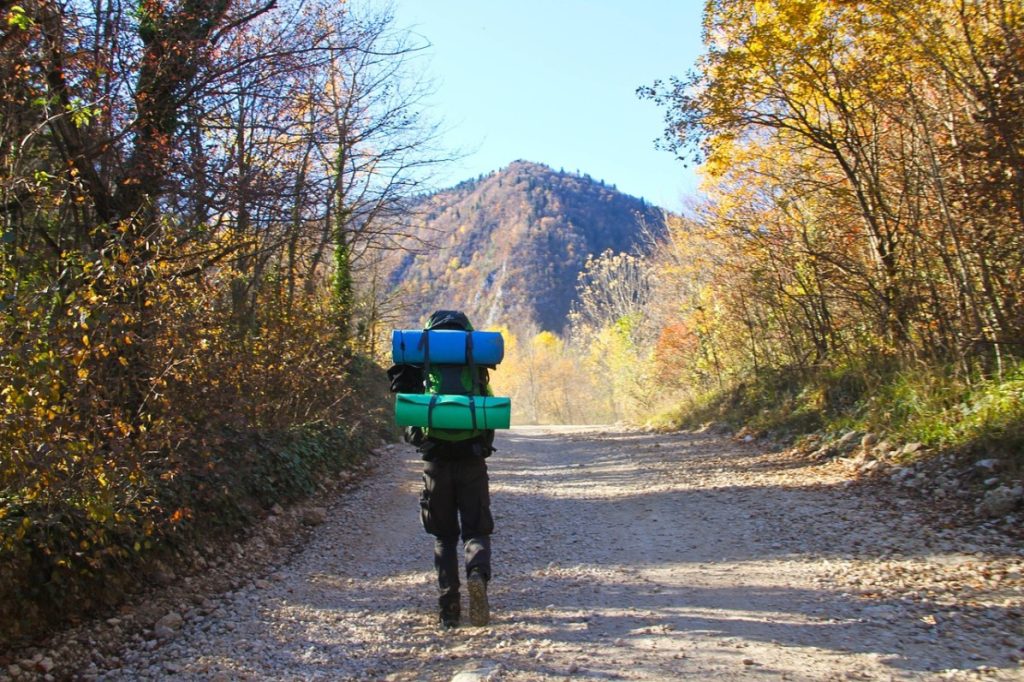
Traveling is a bold and liberating experience that fosters self-reliance, self-discovery, and enduring memories. Whether you’re a seasoned traveler or organizing your first solo trip, a little safety planning can make the trip safer and more pleasurable. You will meet people from different backgrounds, try new foods, and learn about cultures that are beyond anything you could have imagined. However, for beginners, the excitement usually outweighs the importance of safety planning. The goal of this beginner’s guide to safe travel is to prepare a safer trip itinerary for first time travelers. These safety guidelines will make your trip unforgettable for all the right reasons, from digital security and cultural etiquette to packing tips and travel insurance. Following these beginner’s travel safety rules ensures that your first journey is filled with joy, not worry. 1. Research Before You Go A little planning makes a big difference. Learn about the local language, transportation, neighborhoods, and emergency procedures. To avoid offending someone unintentionally, educate yourself on local traditions. Researching in advance helps travelers avoid danger, time wastage, and scams. It is one of the best safe travel tips. Pro Tip: Use apps like Rome2Rio or Google Travel to plan your itinerary. Always find out if your destination requires any special permits or visas. 2. Get Travel Insurance Travel insurance serves as your lifeline for safe travel and is more than just paperwork. The cost of a single medical emergency overseas can reach thousands. Additionally, insurance covers theft, lost luggage, and cancellations. Pro Tip: If you plan to participate in adventurous activities like hiking or water sports, choose policies with “adventure coverage” for benefits. 3. Keep Digital & Physical Copies of Documents Having backup copies of your passport, visa, airline tickets, and insurance is always a good idea. Store printed copies on cloud services and keep them separate. Pro Tip: Keep a laminated sheet of paper with the contact details and your embassy’s information in your wallet. 4. Manage Your Money Smartly Avoid carrying too much cash. The safest way to carry money while travelling is by using prepaid forex cards, digital wallets, and a mix of debit and credit cards. Money should be kept in different locations for your wallet, bag, and hotel locker. Pro Tip: Always keep small change on hand for tips, food vendors, and local transportation. 5. Stay Aware in Public Transport Be attentive during your travel in public transportations like buses, trams, and crowded metros. Keep an eye on your stations & schedules. Pickpocketing or thefts are common in these areas. Pro Tip: Plan on using verified ride-hailing services or registered taxis if you’re running late. 6. Blend In With Locals Those tourists who stand out are frequently targeted. Wear loose clothing, but stay away from branded bags, expensive watches, and flashy jewelry in unfamiliar places. Pro Tip: Learning five to ten basic local words makes you more approachable and secure. 7. Carry a First Aid & Hygiene Kit Travel can be ruined by minor problems like headaches or stomachaches. When pharmacies are not open, a first aid kit saves time. Bring masks, sanitizer, medications, and reusable water bottles. Pro Tip: Important medications should be kept in your carry-on rather than checked luggage. 8. Share Your Itinerary Always inform someone of your travel itinerary. This is crucial for the safety of solo travelers in particular. Pro Tip: When traveling a long journey, use Google Maps or WhatsApp to share your current location in real time. 9. Stay Cautious Online WiFi in public places is convenient but dangerous. Passwords or banking information are easily stolen by hackers. Pro Tip: Avoid making payments online over public networks and use a VPN for safer browsing. 10. Try Local Food Safely Although food is cultural, cleanliness is important. To test the stomach’s tolerance, start with small portions. Pro Tip: Restaurants with consistent local crowds are always a good indicator of tasty and safe food. 11. Know Emergency Numbers Make a note of the local embassy, ambulance, and police contacts. Put them in writing as well; don’t rely just on your phone. Pro Tip: The universal emergency number 112 is currently in use in many countries. 12. Choose Safe Accommodations Make a reservation after reading several reviews. Examine the area, the security features, and the connectivity. Make sure wherever you stay, they are secure and have locks. For low-budget travelers, hostels, homestays, and dharamshalas are good options. Pro Tip: Hostels exclusively for women or accommodations close to major roads are safer for lone travelers. 13. Solo Travel Safety Although it is liberating, traveling alone calls for extra caution. Avoid going for a late-night stroll by yourself, don’t tell strangers your entire itinerary, and follow your gut. Pro Tip: Keep a personal alarm, pepper spray, or whistle on hand in case of an emergency. 14. Packing Essentials A first-time visitor makes the mistake of overpacking. Only bring items you’ll need, and keep necessities close at hand. It is essential to have a portable charger, a water bottle, a travel pillow, a sturdy backpack, and a universal adapter. Pro Tip: To prevent overweight baggage, use packing cubes to organize it. 15. Food & Water Safety Water-borne diseases are common for beginners abroad. Limit your intake to cooked food and sealed bottles of water. Don’t eat salads, ice cubes, or undercooked meat in new places. Pro Tip: Keep rehydration salts on hand to prevent dehydration. 16. Trust Your Instincts Your best defense is intuition. If you sense that someone, a place, or a deal is unsafe, leave. Pro Tip: Safety measures should always come before courtesy. FAQs Q1. What is the best safe travel tip for beginners? Research your destination and stay alert at all times. Q2. Should beginners always buy travel insurance? Yes. Emergencies can occur on even short trips; insurance reduces stress and costs. Q3. What should I pack for safe travel? It is advised to keep a secure wallet, reusable water bottle, universal adapter, and first aid kit. Q4. How can I stay
Ultimate Spain Itinerary for Families: Culture, Fun & Relaxation
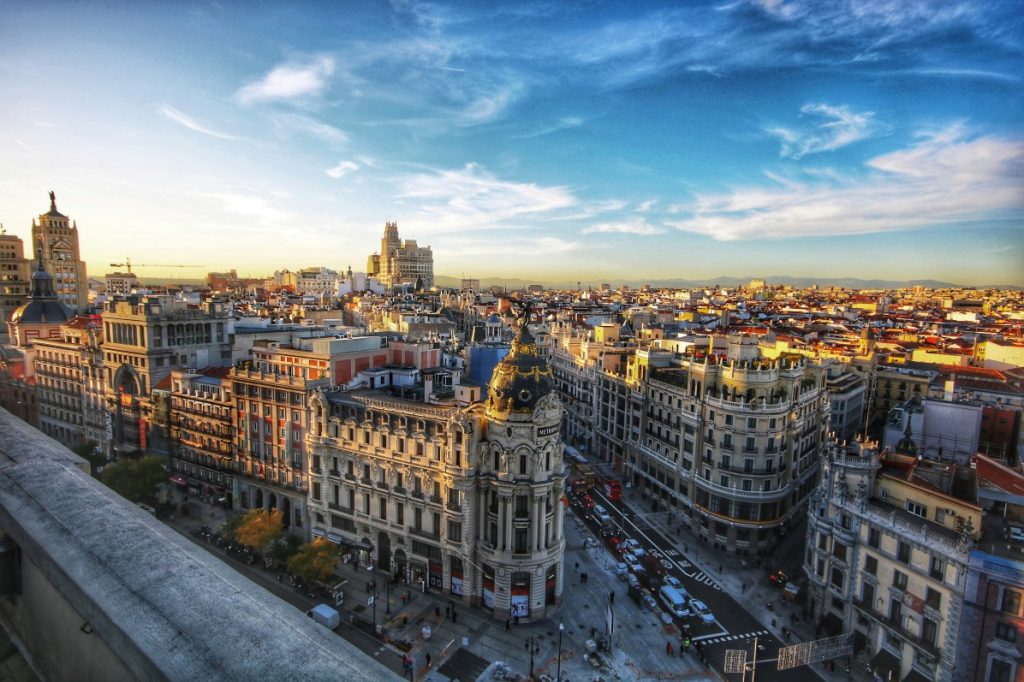
Why Spain is Perfect for Families Few countries in the world strike the right balance between adventure, relaxation, and culture the way Spain does. Imagine kids building sandcastles on Costa del Sol while you sip sangria, or exploring the fairytale-like Alhambra in Granada together. Spain is more than just a trip—it’s a collection of moments that keep families bonded. And the best part? Spain welcomes families with open arms. Restaurants offer kid-friendly tapas, plazas are buzzing late into the evening (great for strollers and family walks), and transport is smooth enough for parents traveling with kids. So if you’ve been browsing through every Spain vacation guide possible, let’s simplify things with a practical Spain travel itinerary that works for the whole family. How to Plan a Spain Vacation Itinerary That Works A family-friendly itinerary requires balance. It’s not just about ticking off the “must-sees” but ensuring everyone—kids, parents, even grandparents—feels included. A good Spain trip planner should include: Short travel distances between major stops Interactive activities like cooking classes, biking tours, or flamenco nights Rest time for kids to recharge Mix of culture + leisure so no one feels bored Now, you could spend hours scrolling through blogs and guides—or you could let technology do the heavy lifting. The Tarzan Way, for example, offers an AI-powered planner that creates a personalized Spain tour itinerary. Instead of copy-paste suggestions, it adapts to your family’s preferences—whether that’s more beaches, more history, or more adventure. One Week Spain Trip Itinerary: A Quick Family Escape If you’re short on time but want a complete experience, this Spain travel planner is ideal: Days 1-2: Barcelona Stroll through Park Güell (kids love the colorful mosaics). Visit Sagrada Familia (short tours are best for younger kids). Beach day at Barceloneta. Days 3-4: Valencia Spend a day at the City of Arts & Sciences (aquarium and science museum). Relax in Turia Gardens, one of the largest urban parks in Europe. Days 5-7: Madrid Enjoy Retiro Park’s boat rides. Visit Prado Museum (kids under 12 enter free). Evening tapas crawl for the whole family. If you’re curious how Spain’s magic has been captured on screen, our blog Reliving Zindagi Na Milegi Dobara: A Journey Through Spain’s Most Breathtaking Destinations explores exactly that. 10-Day Best Spain Itinerary for Families This slightly longer Spain trip itinerary balances culture, leisure, and fun for all ages: Barcelona (3 days) – Gaudí tour, cable car ride at Montjuïc, and a cycling tour. Seville (2 days) – Horse carriage ride through the old town and a family flamenco show. Granada (2 days) – Explore the Alhambra and try a cooking class together. Madrid (3 days) – Take a day trip to Toledo for history and chocolate churros. Two-Week Spain Vacation Packages Style Itinerary If you want to explore deeply without rushing, consider this family-style Spain holiday package approach: Barcelona (4 days) – Add a day trip to Montserrat. Valencia (2 days) – Family paella cooking class. Seville (3 days) – Alcázar and a local food market visit. Granada (2 days) – Evening Alhambra visit (less crowded). Madrid (3 days) – Zoo Aquarium Madrid and Bernabéu Stadium. Costa del Sol (2 days) – Beach time in Malaga. This itinerary mirrors how many Spain tour packages are designed, but doing it independently with an AI-powered Spain travel planner like The Tarzan Way allows you to tweak it to your family’s style. Tips for Family Travel in Spain Best time to visit: April–June or September–October. Transport: High-speed trains are efficient and comfortable. Food: Tapas culture makes dining easy for families—lots of small plates to share. Stays: Apartment-style hotels or Airbnb give you space to breathe. Pace: Don’t overpack your itinerary. Evening strolls (paseos) are a must-do tradition. Spain is also known for its lively nightlife. Our guides on Nightlife in Europe and Top 10 Clubs in Europe can help parents plan a grown-ups night out while kids rest. Spain for All Kinds of Travelers Spain is flexible—it’s as much a playground for kids as it is a cultural goldmine for adults. If you’re a family that travels with pets, you’ll be glad to know Spain is dog-friendly. For more, check out our blog Dog-Friendly Trip to Europe. Spain Tour Packages vs. DIY Spain Travel Planner When it comes to planning, you have two main routes: Spain tour packages – Great for families who want everything pre-arranged: flights, transfers, hotels, and attractions. Stress-free, but sometimes rigid. DIY Spain vacation itinerary – Gives you freedom and flexibility, but takes time to plan. The sweet spot? A hybrid approach. Book basics through Spain trip packages, then use a smart Spain trip planner like The Tarzan Way to add family activities tailored to your style. FAQs: Spain Family Travel Guide Q1: What is the best itinerary for Spain for families with kids? A combination of Barcelona, Valencia, and Madrid works beautifully for younger kids, while adding Seville or Granada makes it richer for older children. Q2: How many days do you need for a Spain family trip? A week is perfect for highlights, but 10–14 days is ideal for a Spain tour itinerary without rushing. Q3: Are Spain tour packages worth it for families? Yes, especially for first-timers. But combining them with a custom Spain travel itinerary gives you more flexibility. Q4: What’s the best time to plan a Spain family vacation? Spring (April–June) and fall (September–October) are the best, with pleasant weather and fewer crowds. Q5: Can Spain honeymoon packages work for families? Absolutely! Many Spain honeymoon packages now offer family-friendly options—romantic dinners for parents, and kid-friendly excursions too. Final Thoughts Spain is a country that truly feels like it was designed for families. Its warm culture, delicious food, and endless list of activities make it one of Europe’s top choices for a family holiday. Whether you’re following a ready-made Spain trip itinerary or using an AI-powered tool like The Tarzan Way to personalize your adventure, one thing’s for sure: Spain has the power to turn family vacations into
